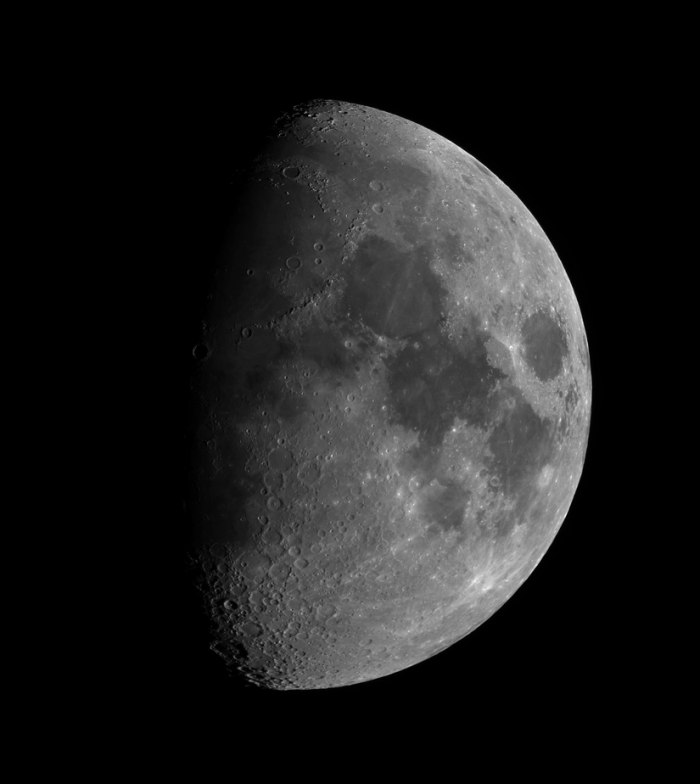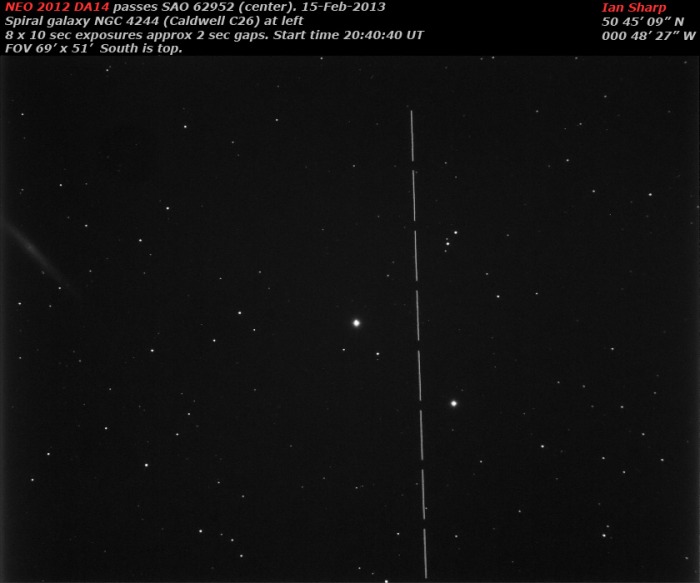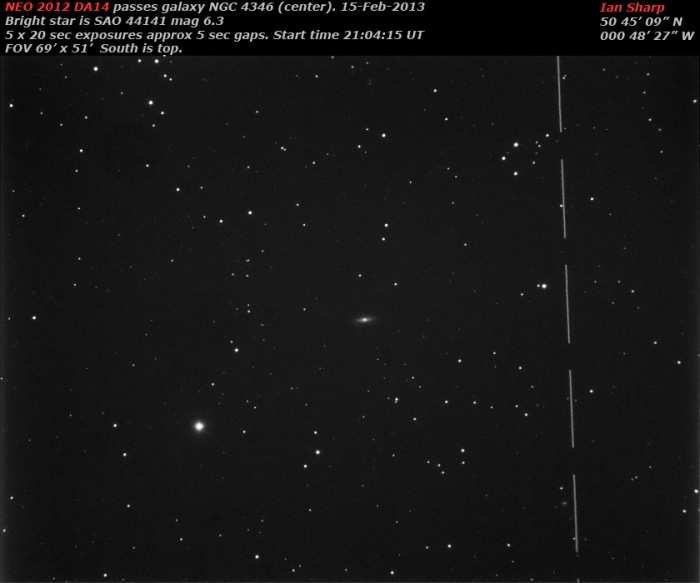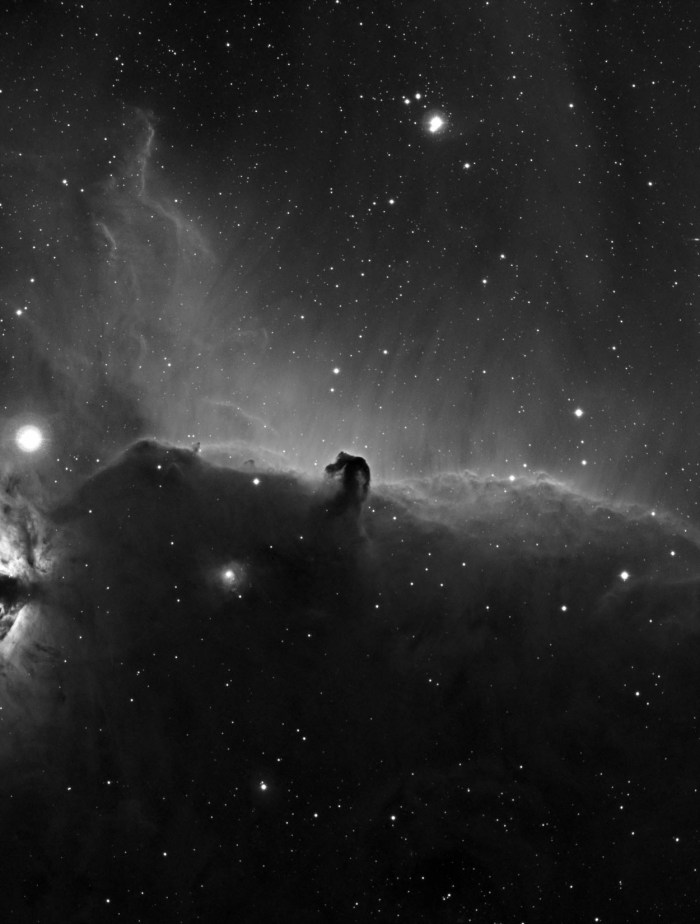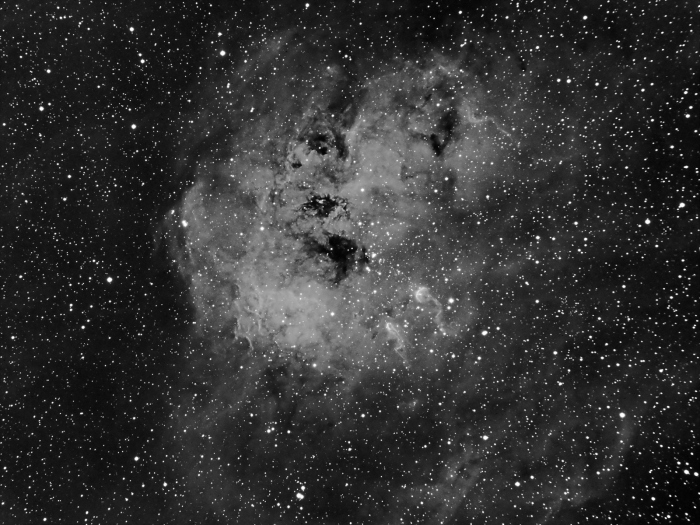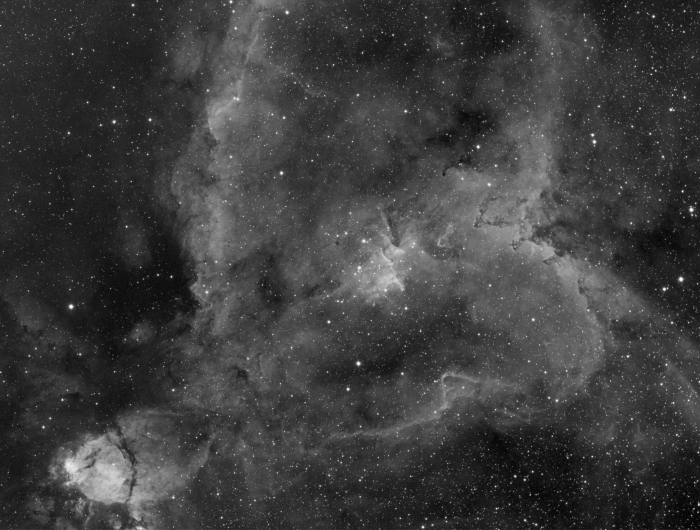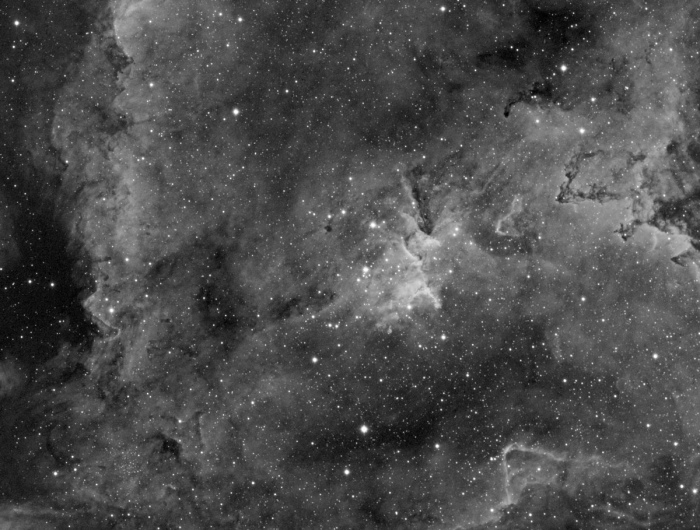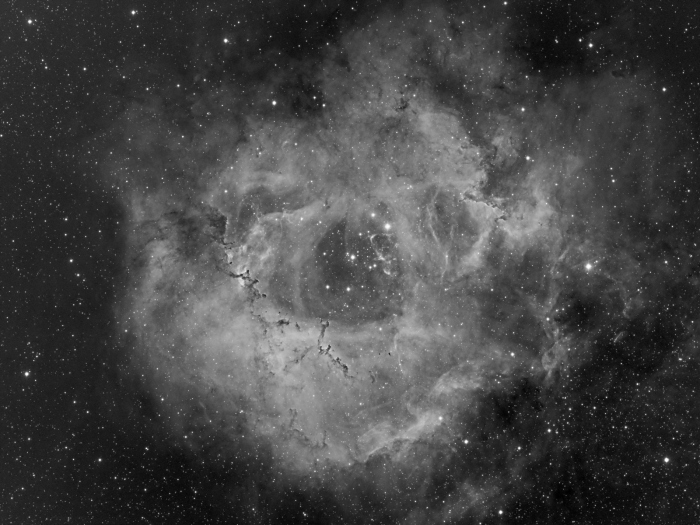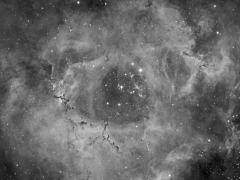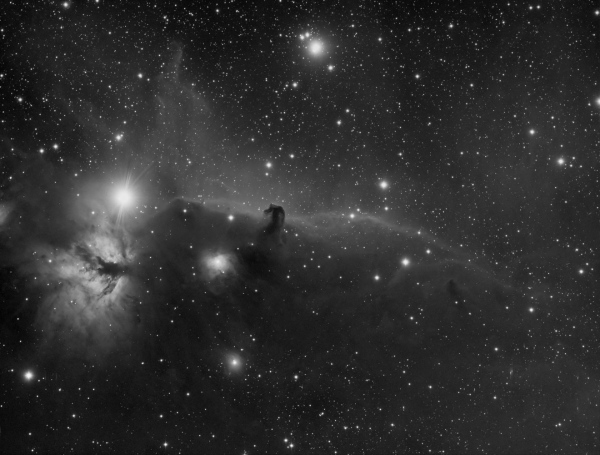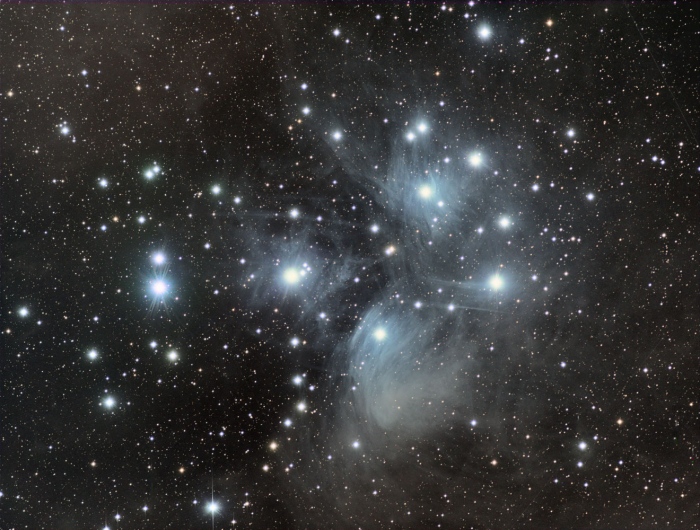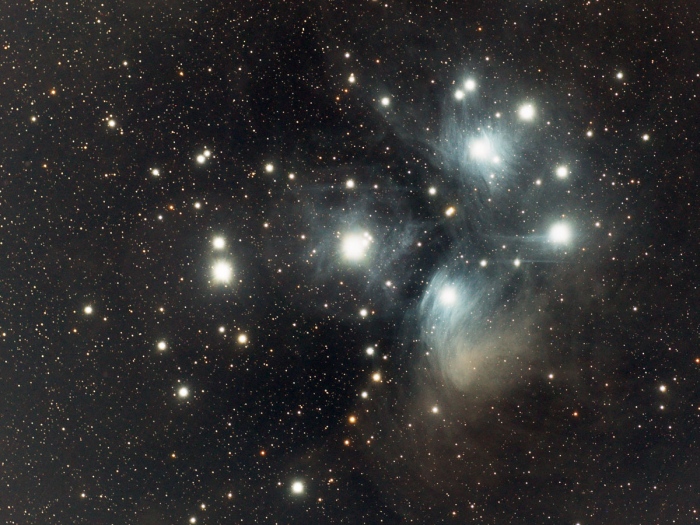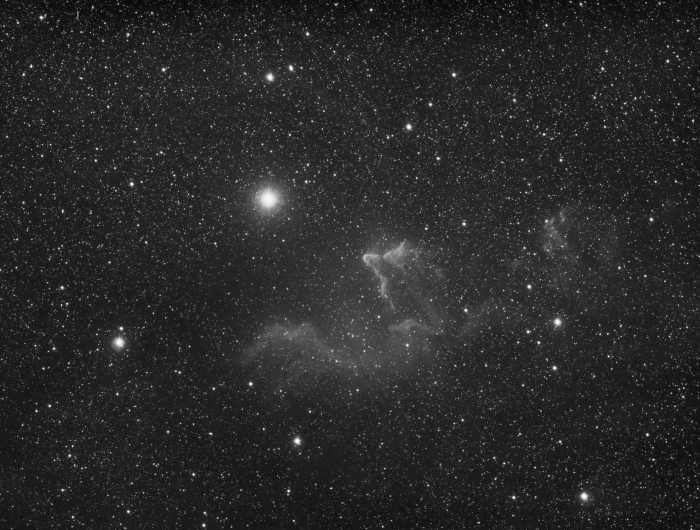It’s been clear and frosty for a few nights here on the South Coast of England, and when it’s dark by 16:30 it’s a long night! So, it’s possible to do a lot in one night.
I am still fascinated with those classic, well known deep-sky targets, so I decided to use the early part of the evening to image M33, the lovely galaxy in Triangulum. I haven’t used this combination of equipment on it before and my Pentax 75 with the ATIK-383L CCD gives a great field of view for this object, and as there was no moon to get in the way I used a clear Luminance filter on this occasion, with the intention of grabbing colour data another night. Here is the result of combining 14, 15 minute exposures:
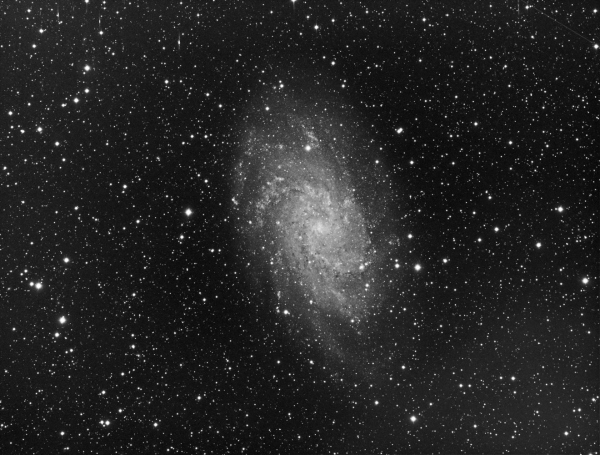
So, by about 22:30, Jupiter beckoned! It had risen nice and high, so I switched telescopes and cameras to image it. I have my Celestron C11 OTA riding alongside the little Pentax refractor, so no need to move any kit in the dark. It turned out that the seeing conditions at very high resolution were not a good as I had hoped (the seeing does not affect wide-field astrophotography as much). So Jupiter came out a bit ‘soft’ as you can see below. This image is a combination of 9, 1 minute video captures with my mono Flea3 CCD. Frames were captured at about 60 frames per second and I took 3 runs in each colour (RGB). WinJUPOS was used to compensate for the rotation of the planet over the 9 minute capture period.
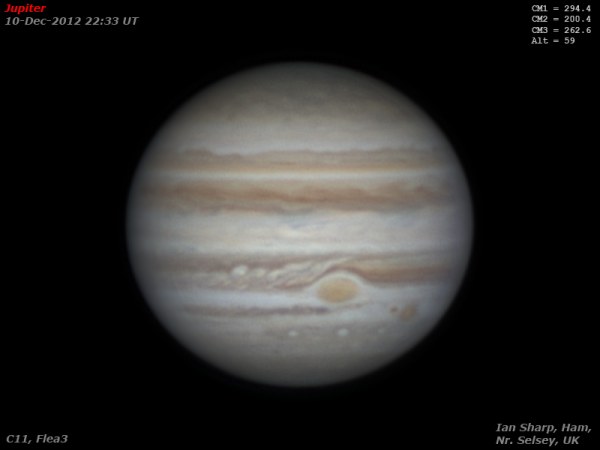
Onwards to my next target – The wonderful Horse Head Nebula in Orion. This was sitting nicely in the sky about an hour before culmination, so I switched back to the deep sky kit again and managed to grab 2 hours of data before deciding to quit for the night. How I’d love to try this target from a more Southerly latitude as it doesn’t get above about 36 degrees from here.
So, all in all a good night. Plenty more to do to turn these two deep sky shots into the finished colour images I want. I’ll probably shot some H-alpha on these as well to sharpen the up!



